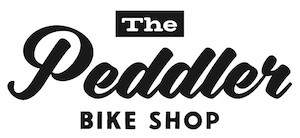GTs58
I'm the Wiz, and nobody beats me!
Here's the 1961 owners manual. But take into consideration that the tires & tubes were better. I installed some new tires and tubes on my 61 Conti a few years ago and replaced the Schwinn tubes, the front tire's stem was starting to rip from the tube. The difference between the two tubes blew my pants off!  I inflated the new tubes with just enough air to give it some shape and to get the folds out. That new tube had an ID that would fit a 36' rim. I blew up the good Schwinn tube and it was a perfect fit for the rim. Also, the 61 Continental didn't use Schwinn Tubular S-6 straight wall rims. I live in AZ and if I pump up a lightweight tire and then set the bike in the summer sun the pressure increased considerably. And if your pressure gauge is off and the pressure is actually more than 90# when you inflate it, what happens then?
I inflated the new tubes with just enough air to give it some shape and to get the folds out. That new tube had an ID that would fit a 36' rim. I blew up the good Schwinn tube and it was a perfect fit for the rim. Also, the 61 Continental didn't use Schwinn Tubular S-6 straight wall rims. I live in AZ and if I pump up a lightweight tire and then set the bike in the summer sun the pressure increased considerably. And if your pressure gauge is off and the pressure is actually more than 90# when you inflate it, what happens then?

 I inflated the new tubes with just enough air to give it some shape and to get the folds out. That new tube had an ID that would fit a 36' rim. I blew up the good Schwinn tube and it was a perfect fit for the rim. Also, the 61 Continental didn't use Schwinn Tubular S-6 straight wall rims. I live in AZ and if I pump up a lightweight tire and then set the bike in the summer sun the pressure increased considerably. And if your pressure gauge is off and the pressure is actually more than 90# when you inflate it, what happens then?
I inflated the new tubes with just enough air to give it some shape and to get the folds out. That new tube had an ID that would fit a 36' rim. I blew up the good Schwinn tube and it was a perfect fit for the rim. Also, the 61 Continental didn't use Schwinn Tubular S-6 straight wall rims. I live in AZ and if I pump up a lightweight tire and then set the bike in the summer sun the pressure increased considerably. And if your pressure gauge is off and the pressure is actually more than 90# when you inflate it, what happens then?
Last edited:



















